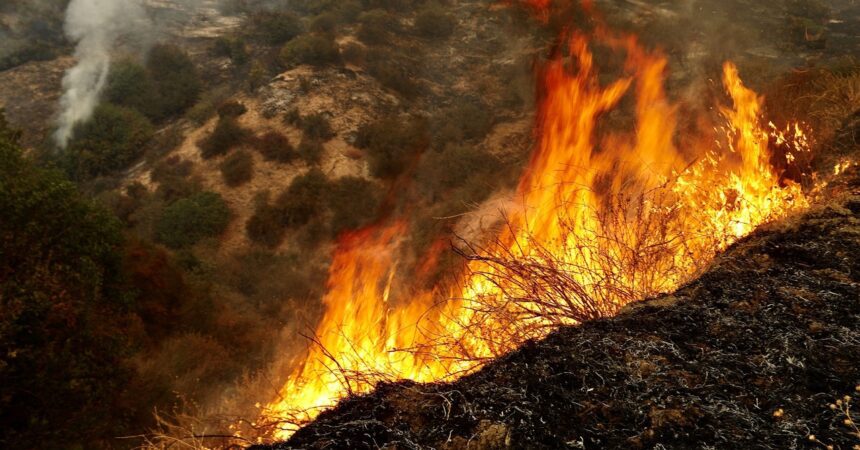Understanding the Health Impacts of Wildfire Smoke: The Alarming Research of 2024
Wildfire smoke has become an increasingly urgent public health concern in recent years, a situation exacerbated by climate change and recurrent forest fires. As researchers delve deeper into the effects of wildfire smoke, the findings are becoming increasingly concerning, revealing serious health risks linked to particulate matter and air quality degradation.
The Nature of Wildfire Smoke
Wildfire smoke contains fine particulate matter, known as PM 2.5, which is less than 2.5 microns in diameter. This size allows these tiny particles to penetrate deep into our lungs and even enter our bloodstream, leading to various health complications. Studies have previously linked PM 2.5 exposure to cardiovascular diseases, respiratory issues, and even cancer. However, 2024 has brought fresh insights that highlight more insidious effects of wildfire smoke.
Disturbing Trends and Projections
Recent estimates from the First Street Foundation have indicated that by 2054, over 125 million Americans could be exposed to unhealthy air quality due to wildfire smoke—representing a staggering 50% rise from present-day figures. Areas like California’s Central Valley, particularly Fresno and Tulare County, are projected to experience three months of unhealthy air every year, reversing any improvements made in air quality over recent years.
Impacts on Fertility
Wildfire smoke has also been found to impact fertility treatments significantly. Research conducted by Oregon Health & Science University revealed that patients undergoing in vitro fertilization (IVF) during smoke exposure produced fewer viable embryos compared to those treated under cleaner air conditions. Given these findings, healthcare professionals may need to reconsider treatment timelines for higher-risk patients during periods of poor air quality.
Premature Deaths and Mental Health Challenges
Wildfire smoke’s implications extend beyond just physiological effects. A study from UCLA indicates that PM 2.5 emitted from wildfires contributed to approximately 55,700 premature deaths in California over a decade. Additionally, research from the University of Colorado Boulder highlights the impact of smoke exposure on adolescent mental health, revealing that children exposed to unsafe air quality were at higher risk of developing anxiety and depression—even as long as a year later.
Long-Term Neurological Risks
The long-term neurological risks associated with firefighting have come under scrutiny as well. Studies using lab rats indicate that prolonged exposure to wildfire smoke may lead to neurodegenerative diseases similar to Alzheimer’s and Parkinson’s among firefighters. This finding underscores the need for protective measures, such as enhanced respirators, for those who dedicate their lives to fighting these blazes.
Wildfire Smoke and Dementia
Perhaps one of the most alarming revelations comes from a recent study published in JAMA Neurology, which suggests that long-term exposure to wildfire smoke may be linked to an increased likelihood of dementia. Data analyzed from over 1.2 million Southern California residents showed that even slight increments in PM 2.5 exposure raised dementia diagnosis risks by 18%. This adds a pressing need for better air quality management, particularly in regions frequently hit by wildfires.
Protecting Public Health
These findings emphasize the importance of proactive measures to protect public health from wildfire smoke. Recommendations for improving air quality include:
- Enhanced Indoor Air Filtration: Upgrading systems in homes, schools, workplaces, and healthcare facilities can help filter out harmful particles.
- Clean Air Centers: Establishing clean air spaces for communities during wildfire events ensures that those without adequate protection have access to healthy air.
- Firefighting Protections: As respirators for wildland firefighters continue to be tested and evaluated, the urgent need for protective gear cannot be overstated.
- Wildfire Management: Preventative techniques, such as prescribed burns and other forest management practices, can help reduce both the risk and intensity of wildfires.
Conclusion
As wildfire incidents rise due to changing climate conditions, understanding the health impacts associated with smoke becomes vital. The research developments of 2024 paint a grim picture illustrating the far-reaching effects of wildfire smoke—from physical health risks to psychological challenges and even increased mortality rates. Addressing these issues through informed public policy and community actions will be crucial in mitigating the impacts of wildfire smoke and protecting public health moving forward.










